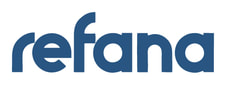|
The NSA (National Sheriff's Agency) Annual Conference, a premier event for law enforcement professionals, is being held this year in Oklahoma and Refana are delighted to be attending and look forward to meeting you at Booth 1149. We will be demonstrating NIRLAB Narcotics, a robust, lightweight, handheld device used for the rapid identification and analysis of narcotic substances in the field. This technology allows for safe, non-destructive testing, providing immediate results without altering the sample. The device is portable and user-friendly, making it ideal for on-site testing by law enforcement officers and customs agents. Its comprehensive and real-time updatable database of known narcotics ensures high accuracy, reducing the risk of false positives and ensuring reliable identification. We look forward to meeting you in Oklahoma!
0 Comments
1/10/2024 Field Drug Tests Wrongfully Implicate Tens of Thousands of Americans Every Year, Study FindsRead NowA new first of its kind study reveals that tens of thousands of Americans every year are wrongly implicated by field drug tests. The study found that almost 30,000 arrests stem from a false positive. NBC News’ Blayne Alexander spoke to one couple impacted by the tests. WAR ON DRUGS Despite the well-known problems with the kits, they're used in half of the roughly 1.5 million drug arrests in this country every year. Roughly 30,000 people every year may be getting wrongfully arrested and jailed because of police departments' widespread use of unreliable roadside field tests for drugs, according to a study released today by the Quattrone Center for the Fair Administration of Justice at the University of Pennsylvania. The study, which bills itself as the first comprehensive analysis of the use of presumptive drug field test kits by law enforcement agencies in the country, estimates that each year approximately 773,000 drug-related arrests involve the use of such test kits. That's half of the roughly 1.5 million annual drug arrests in the U.S. These inexpensive field tests use color reactions to indicate the presence of compounds found in certain drugs. However, the well-documented problem is that the compounds these kits test for are not exclusive to illicit drugs and are, in fact, found in dozens of legal substances. Over the years, officers have arrested and jailed innocent people after drug field kits returned presumptive positive results on bird poop, donut glaze, cotton candy, and sand from inside a stress ball. The Jacksonville Sheriff's Office in Florida stopped using test kits this September after discovering that several common over-the-counter cold medications returned false positives for cocaine. A 2018 investigation by a Georgia news station found that one brand of test kit produced 145 false positives in the state in one year. But no one has ever tried to quantify exactly how many innocent people are jailed because of these tests, until now. Although the true error rate of these kits is not known, the Quattrone Center estimates, based on the incomplete data it could glean from state drug labs and other sources, that as many as 30,000 innocent people a year may be wrongly arrested for drug possession based on their results, making these tests "one of the largest, if not the largest, known contributing factor to wrongful arrests and convictions in the United States." "Presumptive field drug test kits are known to produce 'false positive' errors and were never designed or intended to provide conclusive evidence of the presence of drugs," Ross Miller, Quattrone Center assistant director and lead author of the report, said in a press release. "But in our criminal legal system, where plea bargaining is the norm and actual fact-finding by trial is exceedingly rare, these error-prone tests have become de facto determinants of guilt in a substantial share of criminal cases in the United States and, as a result, a significant cause of wrongful convictions." The Quattrone Center report also found that police departments and local prosecutors' offices often had few policies in place to safeguard against wrongful arrests and convictions based on faulty field tests. The center's survey of prosecutor offices found that 89 percent of them allow guilty pleas to be entered without confirmatory testing of test kit results, and nearly 70 percent of drug labs in the U.S. reported that they were not asked to review samples when a plea agreement has been reached. Read the full article here. This year 773,000 people will be arrested based on field drug tests with known accuracy problems. This report provides the first-ever comprehensive analysis of presumptive drug field test usage across law enforcement agencies in the United States. Inexpensive and fast, these tests have become a tool of choice for law enforcement agencies. Unfortunately, they are notoriously imprecise and are known to produce “false positives,” leading to frequent wrongful arrests and wrongful convictions. Utilizing a nationwide survey of agencies, the report offers national estimates on the frequency of test usage, finding that each year approximately 773,000 drug-related arrests involve the use of presumptive tests. Although the true error rate of these tests remains unknown, estimates based on the imperfect data that are available suggest that around 30,000 arrests each year involve people who do not possess illegal substances but who are nonetheless falsely implicated by color-based presumptive tests. On a per capita basis, Black Americans experience these erroneous drug arrests at a rate 3x higher than White Americans. While factors like eyewitness misidentification, false confessions, or prosecutorial misconduct have been previously cited as leading causes of wrongful convictions, these new results indicate that the use of presumptive field tests in drug arrests is one of the largest, if not the largest, known contributing factor to wrongful arrests and convictions in the United States. Download the report here. In 2023, artificial intelligence (AI) has made significant strides in healthcare, according to experts. Six major AI innovations have reshaped medical practices, contributing to a more personalized, efficient, and accessible healthcare landscape. 1. Generative AI, including ChatGPT:
Overall Impact:
Artificial intelligence experts share 6 of the biggest AI innovations of 2023: 'A landmark year'From cancer care to communications, here’s where AI moved the needle in health care. Read the Fox News article here. Harnessing the Power of Near-Infrared (NIR) Technology in HealthcareTechnological advancements in recent years have played a pivotal role in revolutionizing the healthcare industry. One such groundbreaking innovation is the application of Near-Infrared (NIR) technology, a spectrum of light that lies just beyond the visible range. NIR has found a multitude of applications in various fields, and its potential in healthcare is increasingly being recognized for its non-invasive, rapid, and precise capabilities.
Understanding Near-Infrared (NIR): Near-Infrared light occupies the spectrum between 700 and 2500 nanometers, making it invisible to the human eye. This range allows NIR to penetrate biological tissues, providing valuable insights into the molecular composition of cells and tissues without causing harm. Applications in Medical Imaging:
Diagnostic and Monitoring Tools:
Advantages and Challenges:
However, challenges such as standardization, data interpretation, and widespread adoption need to be addressed to maximize the potential benefits of NIR in healthcare. Near-Infrared technology is proving to be a transformative force in healthcare, offering a spectrum of applications ranging from medical imaging to diagnostic tools. As research and development continue to refine and expand the capabilities of NIR, the healthcare industry stands to benefit from more precise, efficient, and patient-friendly solutions. Embracing this technology opens doors to a new era of healthcare where diagnosis and monitoring are not only accurate but also more accessible to a wider population. Revolutionizing Healthcare: The Impact of Ai-Powered Diagnostic EquipmentIn recent years, the healthcare industry has undergone a transformative journey, with artificial intelligence (AI) playing a pivotal role in enhancing diagnostic capabilities. Advanced diagnostic equipment powered by AI is revolutionizing the way healthcare professionals identify, analyze, and treat various medical conditions. This blog explores the significant strides made in healthcare through the integration of AI into diagnostic tools.
The integration of AI into diagnostic equipment represents a paradigm shift in healthcare, offering unprecedented opportunities to improve patient outcomes, enhance diagnostic accuracy, and streamline healthcare processes. As technology continues to advance, the collaborative efforts of healthcare professionals and AI systems hold the promise of a more efficient, personalized, and accessible healthcare landscape. The ongoing evolution of AI-powered diagnostic equipment reaffirms its status as a cornerstone in the ongoing transformation of healthcare delivery. Transforming Healthcare: The Impact of Artificial IntelligenceThe integration of artificial intelligence (AI) into various industries has sparked significant advancements in recent years, and healthcare is no exception. AI is revolutionizing the way we approach healthcare, offering innovative solutions to improve patient outcomes, streamline processes, and enhance overall efficiency. Let's delve into how AI is reshaping the landscape of healthcare.
The integration of artificial intelligence into healthcare is undeniably reshaping the industry, offering unprecedented opportunities for improved patient care, increased efficiency, and advanced diagnostic capabilities. As technology continues to evolve, the synergy between AI and healthcare promises a future where medical interventions are more precise, personalized, and accessible to all. The journey towards a smarter, more efficient healthcare system is underway, thanks to the transformative power of artificial intelligence. The newest version of ChatGPT passed the US medical licensing exam with flying colors — and diagnosed a 1 in 100,000 condition in secondsDr. Isaac Kohane, who's both a computer scientist at Harvard and a physician, teamed up with two colleagues to test drive GPT-4, with one main goal: To see how the newest artificial intelligence model from OpenAI performed in a medical setting. "I'm stunned to say: better than many doctors I've observed," he says in the forthcoming book, "The AI Revolution in Medicine," co-authored by independent journalist Carey Goldberg, and Microsoft vice president of research Peter Lee. (The authors say neither Microsoft nor OpenAI required any editorial oversight of the book, though Microsoft has invested billions of dollars into developing OpenAI's technologies.) In the book, Kohane says GPT-4, which was released in March 2023 to paying subscribers, answers US medical exam licensing questions correctly more than 90% of the time. It's a much better test-taker than previous ChatGPT AI models, GPT-3 and -3.5, and a better one than some licensed doctors, too. Read the full article here. 1/10/2023 Microsoft reportedly plans to invest $10 billion in creator of buzzy A.I. tool ChatGPTRead NowMicrosoft plans to invest $10 billion in OpenAI, the startup behind popular artificial intelligence tool ChatGPT, according to a report from Semafor. The deal is part of a funding round with other investors involved that would value OpenAI at a whopping $29 billion, Semafor reported Tuesday, citing people familiar with the matter. It isn’t clear whether the deal has been finalized but term sheets sent to prospective investors indicated the plan was to close the deal by the end of 2022, Semafor reported. Microsoft will reportedly get a 75% share of OpenAI’s profits until it makes back the money on its investment, after which the company would assume a 49% stake in OpenAI. Microsoft and OpenAI were not immediately available for comment when contacted by CNBC. For several weeks, the tech world has been abuzz with chatter about ChatGPT. The tool is a natural language processing model, meaning it is designed to generate text that appears as though a human wrote it. The AI model, itself a variant of the GPT-3 family of large language models, has been used for everything from developing code to writing college essays. A bet on ChatGPT could help Microsoft boost its efforts in web search, a market dominated by Google. The company’s Bing browser has only a small share of the global search engine market, however it is hoped the deal could help the firm chip away at Google’s dominance by offering more advanced search capabilities. Read the full article here. |
Details
Categories
All
Archives
June 2024
|
Practical Solutions for complex and urgent global medical problems
© 2024 Refana Inc








 RSS Feed
RSS Feed